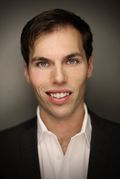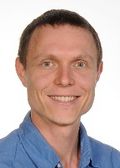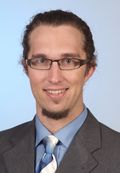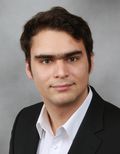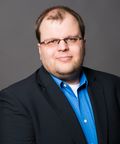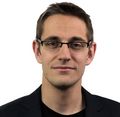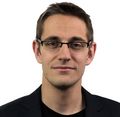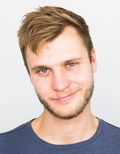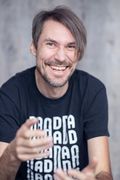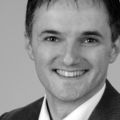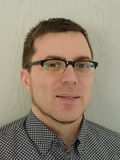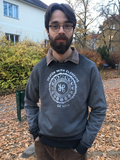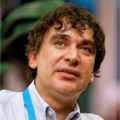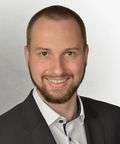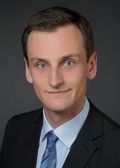Architecture and Design
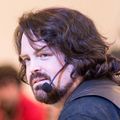
The Art of Code (in English)
Dylan Beattie, Development Consultant
Software and technology have changed every aspect of the world we live in. At one extreme are the ‘mission critical’ applications - the code that runs our banks, our hospitals, our airports and phone networks. Then there’s the code we all use every day to browse the web, watch movies, create spreadsheets… not quite so critical, but still code that solves problems and delivers services. But what about the code that only exists because somebody wanted to write it? Code created just to make people smile, laugh, maybe even dance? Maybe even code that does nothing at all? Code that was created just to see if it was possible? Join Dylan Beattie - programmer, musician, and creator of the Rockstar programming language - for an entertaining look at the art of code. We’ll look at the origins of programming as an art form, from Conway’s Game of Life to the 1970s demoscene and the earliest Obfuscated C competitions. We’ll learn about esoteric languages and quines - how DO you create a program that prints its own source code? We’ll discover quine relays, code golf and generative art, and we’ll explore the phenomenon of live coding as performance - from the pioneers of electronic music to modern algoraves and live coding platforms like Sonic Pi.
Dylan Beattie is an independent consultant, specializing in helping organizations bridge the knowledge gap between software development and business strategy. He has been building data-driven web applications since the 1990s. He has managed teams, holds workshops and works on everything, starting from tiny standalone websites to complex distributed systems. He is a Microsoft MVP (most valuable professional) and speaks regularly at conferences and user groups worldwide. Dylan is the inventor of the Rockstar programming language and as "Dylan Beattie and the Linebreakers" he has appeared worldwide with his software-themed parodies of classic rock songs. You can find him online at dylanbeattie.net and on Twitter as @dylanbeattie.
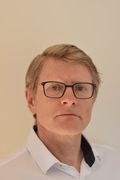
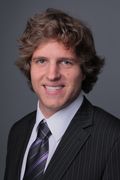

Productionalizing AI in Telecommunications (in English)
Dr. Alan Little, Senior Business Intelligence Analyst, Telefónica Germany, Michael Szech and Dr. Michael Gentner, TNG
(Video)
With the ubiquitous rise of AI and the wish to really harvest its possibilities, a new challenge arises which is very different from the rather scientific task of designing good machine learning models: productionizing AI. How can we easily and quickly move our models from proof of concept to 24/7 operations? What do we need to do to ensure our AI processes run smoothly and reliably? Do our solutions scale to production data volumes? How can we track and maintain model quality with limited data science resources, and dozens or hundreds of models in use in operational processes? The Data Analytics and Artificial Intelligence Department at Telefonica with the help of TNG has built an open source-based framework to address and answer these questions on an enterprise level. Our telecommunications industry case study discusses the challenge of applying machine learning to an environment far removed from academic data science - the realtime, 24/7 world of mobile network operations.
Alan is a Senior Project Manager in Telefónica Germany's Data Analytics & Artificial Intelligence team. For several years he has worked in close cooperation with the Network Service Incident Control team on the application of machine learning to mobile network operations. Alan studied History at Oxford (BA) and Manchester (PhD) before moving into IT. He passed through a variety of jobs in the UK, including a spell as a Data Warehousing project manager for IBM, before emigrating to Germany, where he has lived through the industry transition from proprietary IT and Data Warehousing, to open source driven big data, machine learning and AI. He expects things to remain interesting for the foreseeable future.
Michael Szech is a Senior Software Consultant at TNG Technology Consulting who studied physics at the University Bayreuth and the Technical University Munich. His professional focus is in the area of data engineering, data science and business intelligence. He is interested in the technical implementations as well as in design concepts and in requirements analysis.
Michael Gentner did his masters and a doctorate in mathematics at the University Ulm. There, he mainly dealt with questions from graph theory and optimization. At TNG Technology Consulting, he works as a Software Consultant in the business intelligence area and focuses mainly on data engineering and data science.
Cloud
The BMW Group decided to re-architect and move its on-premises data lake to the Amazon Web Services Cloud. The Cloud Data Hub (CDH) processes and combines anonymized data from vehicle sensors and other sources across the enterprise to make it easily accessible for internal teams creating customer-facing and internal applications, now and in the future. Currently, millions of BMW and Mini vehicles are connected to the CDH via BMW Group’s highly secure backend, processing terabytes of anonymous telemetry data daily. The company uses this data to monitor vehicle health indicators such as check control errors to identify potential issues across vehicle lines ahead of time. This enables the BMW Group to leverage fleet data ingested, collected, and refined from the CDH to better resolve issues, even before they impact customers. TNG has been supporting this project for roughly one year. Join Josef and Max for a whirlwind tour of the CDH’s vision, its challenges and technical solutions.
Josef Viehhauser is Product Owner of the Cloud Data Hub project at the BMW Group. In this role, he has been driving the BMW Group's data transformation from a local “data lake” to a cloud-based, native setup since 2016. In 2019 he presented the transformation process as part of the AWS re:Invent. Before joining BMW, Josef studied Management & IT and Information Systems in Innsbruck, Charleston and Munich and gained his first professional experience as a data scientist at Allianz SE.
Maximilian Bode is a Principal Consultant with TNG. His main focus areas are data-intensive applications and large public cloud deployments. Currently he supports a customer in the automotive sector in building a company-wide Cloud Data Hub. Max likes well-functioning teams, lean processes, and open-source software.
The evolution of computer programming languages from machine code to high-level languages is generally well understood. But did you know that a similar advancement is taking place in the world of Cloud infrastructure programming right now? "Infrastructure as Code" (IaC) is not even 10 years old and paradigm shifts abound. Most recently, AWS introduced the Cloud Development Kit (CDK), which combines the convenience of CloudFormation with the power of general-purpose programming languages. In this talk we will provide a general overview of the IaC landscape with focus on Terraform and the CDK. Expect live demos, code snippets, and practical examples of how you can use these tools in your own production environments. If you have ever wondered how you could deploy your infrastructure reproducibly, using powerful abstractions, and without drowning in YAML files, this is the talk for you. This talk is aimed at developers who have working familiarity with at least one public cloud service. Some concepts will be reviewed briefly.
Maximilian Bode is a Principal Consultant at TNG. His main focus areas are data-intensive applications and large public cloud deployments. Currently he supports a customer in the automotive sector in building a company-wide Cloud Data Hub. Max likes well-functioning teams, lean processes, and open-source software.
Maxim Stykow is a full-stack software developer and DevOps engineer specializing in Cloud Services, Data, and React. When he is not coding, he can be found playing the cello or translating Sanskrit texts.
Azure Functions are the serverless offering in the Microsoft Azure Cloud. A hugely popular computing paradigm, serverless seeing increased interest in the last several years. Azure Functions offer several very interesting value propositions, such as deployment slots, real-time monitoring and the support of rich HTTP interfaces, setting it apart from AWS Lambda. In this talk, we will take a look at the most important features and use-cases for Azure Functions, as well as some common pitfalls.
Michael is a Principal Consultant at TNG Technology Consulting. He has been interested in developing complex, distrubuted systems for a long time. After focusing on building Big Data applications using Java technologies and AWS for the last four years, he is currently part of a team helping a customer build a complex microservice architecture in the .Net world on Azure.
Artificial Intelligence
Chemistry has always been a discipline of trial and error. Due to the complex relationships between the structures and properties of chemical substances, a downright zoo of heuristics and recipes has been developed, whose complexity can easily overwhelm even experts. On the one hand, the application of the right models costs a lot of time and money and, on the other hand, prevents that enough time remains for the crucial creative phases of scientific work. This talk will focus on how complex tasks such as drug design, reaction optimization, and the retrosynthetic decomposition of molecules into commercially available precursors can be automated using AI methods. Thus, the role of humans in these areas is shifting away from trial and error towards evaluation and refinement of the procedures developed by AI. This approach makes it possible to generate new active ingredients with predicted structure-activity relationships as well as ready-made "recipes" for their production in rapid iterations. The truly time-consuming steps can be taken over by the computer, nearly in real time. In particular, we will focus on the subfield of retrosynthesis, whose complexity is particularly striking. Until the emergence of machine learning methods, this area required the mastery of thousands of reaction regulations, their reaction conditions, and possible dangers. We will also present and critically examine our proof of concept for such software, NeUReAc. NeUReAc was born out of an idea that Segler et. al. published in 2018 in a groundbreaking paper but aims to be easy to use and expand.
Daniel studied Chemistry in Cologne and received his doctorate in theoretical chemistry in the winter semester 2013/14. During his PhD studies he focused on the development of simulation software in C++. Prior to joining TNG, he worked as a freelancing lecturer for natural sciences and mathematics at the Technical University Fresenius in Cologne and similar institutions. As a software consultant at TNG Daniel worked as a full-stack Java developer in several projects for online retailers and telecommunication companies. Currently he leads a team focusing on algorithm development for self-driving cars for a leading German automotive company. In his spare time, Daniel is interested in systems programming with Rust, computational chemistry, robotics and, most importantly, in creating LEGO fantasies under the guidance of his two daughters.
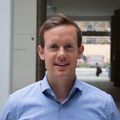
Are Machines Really Intelligent? About Software-Based Investing and the Ethical Impact of Artificial Intelligence Today
Frank Steffen, Founder and Managing Director, CapTec Analytics and Lendary
(Video)
While Artificial Intelligence has been very successful in many areas, such as medical diagnostics, facial and voice recognition, self-driving cars and other forms of 'pattern recognition', its applicability to the area of stock exchange trading - despite the high level of technological developments - is not very common. This talk points out why the classic 'black box' procedures are structurally more difficult to apply in the financial market than in other areas and at the same time shows that hypothesis-based procedures in the algorithmic trading can still create great value. The second part of the talk takes a social perspective on the medium and long-term opportunities and risks of AI applications. First, the thesis of a possible 'superintelligence' is critically examined, according to which an 'intelligence explosion' could occur, in which AI systems improve themselves iteratively and would thus be beyond any human control. This idea is countered by the structural limitations of current AI systems. At the same time, the focus is on the immediate ethical questions that already arise from the use of such systems today. On the one hand, this concerns the question of how we see ourselves as individuals, whose even most personal decisions are being taken more and more by machines. On the other hand, there is also the political question of whether a data-driven world could promote more centralistic policy approaches over the decentralized processes of democratic decision-making.
Frank Steffen is Managing Director and Co-Founder of CapTec Partners, a quantitative asset manager based in Munich. Before founding CapTec, he worked as a strategy consultant for the Boston Consulting Group, again with a focus on data analytics. He holds a MSc in Innovation, Entrepreneurship, and Management from the Imperial College London.
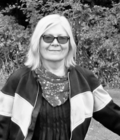
Neural Bricolage: Crafting AI Art Pipelines (in English)
Helena Sarin, Visual Artist and Software Engineer, AI Artists
Helena’s use of GANs is the modern-day equivalent of da Vinci grinding his own pigments
—Grady Booch
Helena invites you on this behind-the-scenes tour as she goes over her experiments with AI as a new artistic medium. She starts with general principles of AI Art making process, its roots in the computational generative art landscape and its tools based on deep neural networks. How does AI art reflect visual truth in times when breakthrough research allows to generate diverse images with photographic accuracy, in our increasingly AI-driven world? From that perspective Helena examines how imagery produced by generative models could be similar to human memory - as collages, as compression and distillation of previous events. Going from general to personal, Helena shares her approach to AI art making for which she coined a term - Folk AI Art: though made using state-of-the-art technology, it aims to carry on traditions of folk art - beauty, humor and craft.
Visual artist and software engineer, Helena Sarin has always been working with cutting edge technologies, first at Bell Labs, designing commercial communication systems, and for the last few years as an independent consultant, developing computer vision software using deep learning. While she has always worked in tech, Helena has been doing commission work in watercolor and pastel as well as in the applied arts like fashion, food and drink styling and photography. But art and software ran as parallel tracks in her life, all her art being analog… until she discovered GANs (Generative Adversarial Networks). Since then generative models became her primary medium. She is a frequent speaker at ML/AI conferences, for the past year delivering invited talks at MIT, Library of Congress and Capitol One. Her artwork was exhibited at AI Art exhibitions in Zurich, Dubai, Oxford, Shanghai and Miami, and was featured in number of publications including the recent issue of “Art In America” magazine.
The training of artificial intelligence systems can be accelerated by using simulated environments that deliver realistic data for complex problems. Based on the by TNG developed virtual reality game “Blobby VR”, we show the linkage of Reinforcement Learning to a simulated environment for the training of a computer game AI. Reinforcement Learning represents several methods of machine learning. An agent maximizes received recompenses by learning a strategy independently. For this example, we use a simulation to accelerate the learning process of a deep neuronal network. During the presentation, we are going to discuss the basics of Reinforcement Learning and the simulation first. / We are going to start the presentation with the basics of Reinforcement Learning and the simulation. Afterwards, we are going to illustrate how a linkage between those two technologies within the game engine Unity is possible. In doing so, the simulated environment reproduces reality in all relevant aspects and offers the possibility of replacing human gamers with AI-agents. Using Reinforcement Learning, the behavioural traits of a real gamer can be learned. To conclude, we are going to show how our example is transferable to other applications, for example in the production or logistics industries.
Dr.-Ing. Maik Deininger is a TNG software consultant and develops cloud-based web applications. Furthermore, he is engaged in the combination of AI-systems to simulated environments. Beforehand, he did his PhD at the faculty of mechanical engineering at the Technical University Dortmund in the field of simulation-based optimizations for decision support in the production and logistics industries.
Thomas Endres is one of the partners at TNG. Besides his normal work for the company and the customers, he is creating various prototypes – one of them being a telepresence robotics system with which you can experience reality through the eyes of a robot, or an Augmented-Reality-AI that shows the world from the perspective of an artist. He is working on various applications in the fields of AR/VIR, AI as well as gesture-based controlling to let quadrocopters fly autonomously or to navigate them contact-free, for example. Beyond, he is involved in other open-source-projects written in Java, C# and all kinds of JavaScript languages. Thomas studied IT at the TU Munich and is passionate about software development and all the other aspects of technology. As an Intel Software Innovator and Bleck Belt, he is promoting new technologies like AI, AR/VR and robotics worldwide. For this he received amongst others a JavaOne Rockstar award.
Artificial Intelligence can now be used in Olympic Sports to create technical evaluations for athletes in real time and thus replace hours of post-processing of the videos by trainers. In collaboration with the Olympic Training Centre in Heidelberg, the TNG Innovation Hacking Team created a software that automates scientific technology analysis in top-class canoeing. Video recordings once had to be exhaustively watched and individual images had to be analyzed for specific angles by hand. Thanks to our application, this evaluation is now fully automated using several modern techniques from the area of neural networks. In this talk, you will learn about how the software uses the raw video material to determine the angles at which a canoeist sticks his paddle into the water. The speakers will show you how to stabilize the shaky camera images against the waterline using segmentation, how OpenPose finds the hands of the athlete and how a classification model uses transfer learning to differentiate between a paddle above and below the waterline. The TNG-Consultants will also go into details of the technologies and neural networks used.
Thomas Endres is one of the partners at TNG. Besides his normal work for the company and the customers, he is creating various prototypes – one of them being a telepresence robotics system with which you can experience reality through the eyes of a robot, or an Augmented-Reality-AI that shows the world from the perspective of an artist. He is working on various applications in the fields of AR/VIR, AI as well as gesture-based controlling to let quadrocopters fly autonomously or to navigate them contact-free, for example. Beyond, he is involved in other open-source-projects written in Java, C# and all kinds of JavaScript languages. Thomas studied IT at the TU Munich and is passionate about software development and all the other aspects of technology. As an Intel Software Innovator and Bleck Belt, he is promoting new technologies like AI, AR/VR and robotics worldwide. For this he received amongst others a JavaOne Rockstar award.
Jonas Mayer is an IT consultant at TNG. Prior to joining TNG, he studied Computer Science: Games Engineering at the TU Munich. As part of his studies, he also worked intensively on machine learning and hardware-related programming in addition to numerous game projects. At TNG, he mainly hacks hardware and works on several showcases and prototypes, from deepfakes over mixed reality AI artworks to autonomously flying mini drones.
Hardware & Reality Hacking

Hyperloop - from the SpaceX Prototype to the Transportation of the Future
Florian Janke, NEXT Prototypes e.V. and Project TUM Hyperloop
(Video)
The American billionaire and visionary Elon Musk builds spaceships and electric cars. In 2013 he published a traffic concept for the future. At more than 1000 kilometers per hour, people will speed towards their destination in vacuum tubes, saving energy and time. But not only the concept is revolutionary, the way to get there is, too. Elon Musk regularly organizes competitions in which the best student groups from around the world compete against each other with their specially developed tube vehicles. The TUM Hyperloop group of the Technical University of Munich, four-time winner of the competition and current world record holder with a speed of 482km/h, has been successful from the very beginning. Longtime member Florian Janke presents the philosophy of the Hyperloop concept, the challenges of the competitions and the groundbreaking developments of the team.
Florian Janke has been studying at the TU Munich since 2011. In 2016 he received his bachelor's degree in aerospace engineering. During this time, he participated in various student projects, including the design and construction of a CubeSat Mini Satellites. After graduation, he worked for a short time in an aerospace company before he started his master’s in aerospace engineering at the TUM, where he, immediately during the first semester, joined the second Hyperloop team as structure team lead. He was responsible for the development of the CFRP Chassis and the design of many propulsion components. After winning the competition in LA and a world record speed of 324 km/h, he and other team members founded the third Hyperloop Team at the TU Munich and he was responsible as technical team lead for the mechanical components. In the third competition, the team won its third consecutive victory with a new record speed of 467km/h. Last year, the fourth and so far last competition took place. Again, the team, now under the new club "NEXT Prototypes e.V.", could win against first-class teams from all over the world and brought the trophy to Munich with a new top speed of 482 km/h. Florian is one of the three founders of the new club and since then he is responsible for the finances as treasurer.

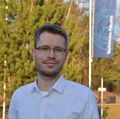
Robotics Erlangen: Autonomous Soccer Robots in the RoboCup Small Size League
Lukas Wegmann and Michael Niebisch, robot developers at Robotics Erlangen e.V. and vice world champions in the RoboCup Small Size League, "Soccer Made in Germany"
(Video)
Robotics Erlangen: Autonomous soccer robots in the RoboCup Small Size League:
The “Robotics Activities Erlangen e.V.” and later “Robotics Erlangen e.V.” started as a small project at the University of Erlangen-Nuremberg. Since then we have devoted ourselves to the topic of robot soccer and regularly compete in the RoboCup. At this world championship of robots, we compete in the Small Size League (SSL) against international opponents and were able to achieve the vice world championship title in 2017 and 2019, among others. During the games, the robots must act completely autonomously, and humans are no longer allowed to intervene. From above, cameras watch the game and a central AI controls up to 11 robots. In terms of their mechanical and electronic structure, these were developed and built by the team themselves. The firmware, controls and strategy are constantly being developed. In addition to the challenges that arise in the development as a student project, we will also give an insight into our research and the current state of the art. We show why the acceleration of golf balls for passes must be considered, why highlighters can increase the precision and how forgotten code sometimes ensures that nobody shoots at the goal.
Michael Niebisch is an engineer and recently completed his master's degree in information and communication technology with a focus on communication and transmission technology. During his studies, he gained experience in a startup in Slovakia and in the pre-development of Audi AG. Since 2012 he has been a member of “Robotics Erlangen e.V.”, in which he has worked, among other things, in the electronics and strategy team. From 2016 to 2018 he led the activities of the association as Chairman of the Board.
Lukas Wegmann is a student of mechatronics and has been working in the "Robotics Erlangen e.V." since 2016. He is responsible for the development of the strategy and firmware. Since 2018, he has also served as Chairman of the Board. In addition to his competencies in engineering and management, he also earned many awards in cultural fields, such as the Hilpoltstein City Culture Award and the Award for musical commitment of the Bavarian Music Association.
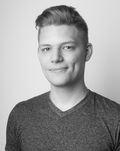
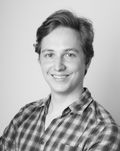
Warship Mars: Experience Digital Underwater Archeology at Home Thanks to Virtual Reality
Marvin Podsendek, Multimedia and VFX Artist, and Felix Herbst, co-founder and managing director, prefrontal cortex
(Video)
It is the year 1561. King Erik XIV of Sweden is involved in a war with Denmark and the Hanseatic city of Lübeck. In order to gain supremacy over the maritime trade routes of the Baltic Sea, he orders the construction of Mars, a new type of warship. After only one year in operation the ship sinks and remains missing for over 400 years. In 2011 the ship was rediscovered near the Swedish island of Öland - a sensation in underwater archaeology! Since then, annual expeditions have brought to light new findings. Photogrammetric models of the wreck lying at a depth of 80m and some artefacts were generated from thousands and thousands of photos and made available by the scientists. These contents were optimized by us especially for the mobile Oculus Quest VR glasses and made accessible in an interactive application. Research results and background knowledge about the legendary battleship can be explored virtually by researchers as well as laymen in playful dives: Warship Mars. Digital archaeology - experience it at home!
Marvin Podsendek is a multimedia and VFX artist at prefrontal cortex, a start-up for innovative applications and interaction concepts from Halle (Saale). His work includes animation, 3D modelling, environment art and particle systems in interactive applications and prototypes for Intel, BMW, Porsche, or Facebook. As a freelance artist he has also taught several courses as a lecturer at the Martin-Luther-University Halle-Wittenberg, the Burg Giebichenstein University of Art Halle and the Harz University of Applied Sciences.
Felix Herbst is co-founder and managing director of prefrontal cortex. As Technical Lead he is constantly creating unheard-of possibilities to unite and inspire media, technologies, and people in interactive worlds of experience. Last but not least, prefrontal cortex’s projects have been selected for the "Best of XR" lists by Forbes, are presented all over the world, and inspire people to experience new technologies.
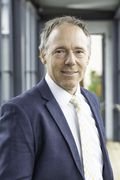
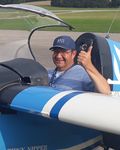
450 PS Concorde Model = 3x Guinness Book of World Records
Otto Widlroither und Johann Kolm, engineers and model makers
(Video)
With a length of ten metres, a wingspan of 4.30 metres and 400 HP output, they built the world's largest airworthy model of the Concorde. It is powered by four real kerosene turbines, each with an output of 90 kW and is made of 100% carbon fibre. The manufacturers also relied on digital transformation using a modern remote control system by combining the System Core and Power Box, the safest system in the world.
Otto Widlroither is a mechanical engineer, passionate model aircraft builder and holder of several patents in the fields of engineering, electronics and process engineering. He is currently head of the machines and tools division at ROBEL Bahnmaschinen. In addition, he has been building models for 40 years, with which he has broken the speed world record Quater Scale Four Stroke with over 300 km/h with the Kolm 4 cylinder in-line engine. With his models he has already reached the front pages of magazines worldwide and is regularly invited to air shows, for example in Dubai and the USA.
Johann Kolm works as a production technologist and CNC specialist at RO-RA Aviation Systems and has been a model maker for 45 years. He is the founder of Kolm Engines Modellmotoren and has already developed 40 different engines. He has been invited to numerous airshows in Europe and the USA and appeared on DMAX together with Otto Widlroither.

The Story of Glomar Explorer in a Giant LEGO Version (in English)
Pawel Kmiec, model designer
(Video)
Inside look at a design and build process of a floating remotely-controlled 2-meters-long LEGO model of the Glomar Explorer ship, and how it was used to recover a model submarine in a swimming pool.
Note: This is a follow-up project to the Big Techday 2019 talk "A Real-Life Mission Impossible: Raising a Sunken Soviet Submarine"
I'm Pawel, known as Sariel, based in Warsaw, Poland, and I have 13 years of experience in building custom LEGO models, as well as two books under my belt. I've built roughly 250 models of cars, trucks, tanks, construction equipment, and even trains, planes or ships, starting from very simple ones to ones that were over a year in the making and included close to 20 meters of electric cables. My models have been featured at Top Gear, Jalopnik and Engaget websites, among many others. My tanks have been praised by military experts, members of tank crews, and by team behind the World Of Tanks game. Two of my books on LEGO - Unofficial LEGO Technic Builder's Guide and Incredible LEGO Technic - are now available in 11 languages, including English, German and Chinese. I have also helped the LEGO company in prototyping a few elements and I'm acting as one of a handful of external reviewers of LEGO Technic sets. I run a YouTube channel with 80+ million views and you'll find more at my website, sariel.pl
After many years as a software developer in various startups, Teja Philipp created for fun the laser cutter - Mr. Beam. The device's surprising Kickstarter success made him an overnight entrepreneur. 6 years later, he reports joy and suffering on the way from techie to managing director, from kit to product and from crowdfunding to VC investment.
Information Security
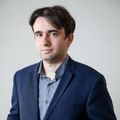
Information Security: How and Why It Isn't Working (in English)
Bozhidar Bozhanov, Founder and CEO, LogSentinel
(Video)
We'll go through best information security practices and top them up with thoughts on why that has not been enough to keep us protected.
Bozhidar Bozhanov is co-founder and the CEO at LogSentinel. He is a senior software engineer and solution architect with over 10 years of experience in the software industry. Bozhidar has been a speaker at numerous conferences and is among the popular bloggers and influencers in the technical field. He is one of the top-ranked users in Stack Overflow and his tech blog is recognized as one of the top Java developers blogs by international online media.
Programming Languages
Which framework is suitable for my (enterprise) application in 2020? The talk offers a comparison of aspects relevant to one's decision making when choosing an option. Which product is to be developed? Is the application to be rewritten or migrated? Which developers are available? How important is performance? How important is modular architecture? How long should the application be used? How important is the flexible use of existing libraries? How important is testability?
Cathrin Möller is a Senior Software Consultant at TNG Technology Consulting, where she pursues her programming passion in various customer projects. Her focus is on agile full-stack software development, software architecture, responsive design, and test automation. She did her doctorate in theoretical physics in Darmstadt. In her free time, she enthusiastically runs long distances through the mountains and trains hard to further increase her running records.
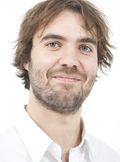
Making Java more Dynamic (in English)
Rafael Winterhalter, Creator and Team Lead of the ByteBuddy Library
(Video)
While Java’s strict type system is a great help for avoiding programming errors, it also takes away some of the flexibility that developers appreciate when using dynamic languages. By using runtime code generation, it is possible to bring back some of this flexibility back to the Java virtual machine. For this reason, runtime code generation is used by many state-of-the-art Java frameworks for implementing POJO-centric APIs but it also opens the door for assembling more modular applications. This presentation offers an introduction to the complex of runtime code generation and explains why non-standard Java runtimes like Android Runtime or Graal’s Substrate VM sometimes struggle to execute existing Java code. Finally, the presentation details strategies of how library developers could work around these limitations by changing their code generation patterns.
Rafael works as a software consultant in Oslo, Norway. He is a proponent of static typing and a JVM enthusiast with particular interest in code instrumentation, concurrency and functional programming. Rafael blogs about software development, regularly presents at conferences and was pronounced a JavaOne Rock Star. When coding outside of his work place, he contributes to a wide range of open source projects and often works on Byte Buddy, a library for simple runtime code generation for the Java virtual machine. For his work, Rafael received a Duke's Choice award, an Oracle groundbreaker award and was elected a Java Champion.
Tools and Methods
We will present a new approach and its implementation for the migration of legacy code, which are based on test-driven development and customer-specific extensions. The code is automatically translated from an outdated source language like PL/I to a modern language like Java. This prevents repetitive and error-prone work during the translation. At the same time, by using customer-specific heuristics, we avoid over-generalizing the generated code and it remains easy to read. In the talk we first deal with how we map general features of the source language using a context-free grammar and then automatically translate them. The integration of customer-specific features and the iterative expansion of the translator (transpiler) also represent an important cornerstone of our approach. We will show this using the example of selected preprocessor directives. We also go into the module test framework for PL/I created especially for this purpose and its use in test-driven translation. Finally, we examine the reliable maintenance of the semantics of the original code and thus pave the way for subsequent refactoring in the target language.
Andreas Bärnthaler is a senior consultant at TNG. In his projects for customers, he mainly works in the Java environment and in the areas of DevOps, Continuous Integration and Cloud Migration. Besides that, he also works on compiler bulding and on side projects in which he automatically translates legacy code.
Thomas Endres is one of the partners at TNG. Besides his normal work for the company and the customers, he is creating various prototypes – one of them being a telepresence robotics system with which you can experience reality through the eyes of a robot, or an Augmented-Reality-AI that shows the world from the perspective of an artist. He is working on various applications in the fields of AR/VIR, AI as well as gesture-based controlling to let quadrocopters fly autonomously or to navigate them contact-free, for example. Beyond, he is involved in other open-source-projects written in Java, C# and all kinds of JavaScript languages. Thomas studied IT at the TU Munich and is passionate about software development and all the other aspects of technology. As an Intel Software Innovator and Bleck Belt, he is promoting new technologies like AI, AR/VR and robotics worldwide. For this he received amongst others a JavaOne Rockstar award.
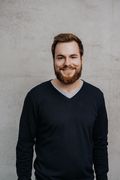
Future Employee Communication: How to Integrate Employees Securely, Efficiently & Mobile in Times of Office 365, Intranets and Messengers
Benedikt Ilg, CEO, Flip
Can the intranet be expanded in a user-friendly and mobile manner as an end point for communication, HR services and IoT? How can communication work effectively, quickly and easily using private tools - BUT still be compliant with the GDPR and worker’s council (Betriebsrat) guidelines? And how can top-down information be distributed to ALL employees - whether in production, in the warehouse, at the desk or part-time - in real time? Benedikt Ilg, CEO of Flip, explains how to solve ALL these problems with just one app.
Benedikt Ilg founded the Flip Employee App in 2015 and has been its CEO since then. He started working in his spare time with the Flip team on the development of the employee app and since 2018 has been the thoroughbred CEO. In addition, he is a lecturer at the DHBW Stuttgart in the area of innovation / lean startup. Until 2018 he was project manager for the Porsche AG in Stuttgart, after finishing there his B.A. in Business Administration with an Industry focus as a dual student in 2016.
Modern work is more complex and interdependent than ever before. In a recent study, Slack explored what workers need to thrive in this new era of business. We found there is a fundamental challenge common to all organisations. And that challenge is, at the simplest level, one of an alignment paradox. Using our own Solution Engineers as an example we want to show how a day in their life looks like. Making people's working lives simpler, more pleasant and more productive by leveraging integrations, workflows and apps in Slack.
Ciarán Doyle is a Senior Solution Engineer at Slack EMEA. Day to day he helps large enterprise companies across Europe evaluate Slack from a value, technical and security standpoint. Ciarán has over 10 years experience in the IT community working with Oracle, as well as on technologies from IBM and Anaplan.
JHipster is the most popular code generator in the Java world with more than 14k GitHub stars, 500+ contributors, 100ths of companies using JHipster and a large ecosystem of modules and plugins. This session will introduce you to the possibilities of JHipster and show you how to build a modern web application with JHipster using Java and JavaScript. We will show the typical application scenarios and build from scratch to a complete web application and run it in the cloud. We will take a look at best practices in dealing with generated code and give an outlook on the future of JHipster.
Frederik is a member of the JHipster Core Team since 2015 and has worked on different parts of the frontend and backend over the years. Currently he is responsible for Gradle Support and has helped to advance Vue Support. He works at WPS Management GmbH in Paderborn on the open B2B integration platform wescale and organizes the meetings of JUG Paderborn and the local Devoxx4Kids group.
David Steiman from Berlin is a member of the JHipster Core Developer since 2016 as the main responsible for the JHipster UAA Server and the related OAuth2 ecosystem. With a focus on microservices development, he worked on parts of the JHipster platform, such as the Kubernetes support, docker, etc. He also initiated 2018 hetzner-kube, a management tool for Kubernets Cluster. Since 2019 he is working on the "Side-By-Side" design pattern for generator-driven developments.
Lessons from nearly 25 years spent working with, for and against Google and what these lessons mean for a future increasingly dominated by monopolists.
Jean-Paul is the Chief Scientist of Hubert Burda Media - a global media company. He is also the founder and CEO of Cliqz GmbH - a search engine and browser company in Europe and the CEO of Coc Coc Limited - a search engine and browser company in Vietnam. He also serves on different boards - most notably on the Board of Directors of XING AG (a leading online professional network). He was the CTO and CEO of Burda Digital from 1996 to 2003. Jean-Paul received a Master's Degree in Computer Science from Stanford University, a Master's Degree in Philosophy (magna cum laude) from the University of Louvain (Belgium) and a B.A. in Economics from the University of Louvain. Originally from Belgium, Jean-Paul is fluent in French, English, German and Dutch and lives in Germany with his wife and four children.
The Christmas season, initiated by Black Friday, is the period with the highest turnover for many B2C webshops. Therefore, it is especially important for fast-growing shops to ensure in advance that the application and infrastructure will be able to handle the expected load. We report on our experiences last year in preparing a customer shop for the pre-Christmas season. In particular, we will discuss how the interplay of distributed load tests of the production system and suitable data visualization can be used to identify performance bottlenecks in a web application on the one hand and to increase stakeholder confidence in the entire application setup on the other.
Leopold Kellers enjoys facing technical or scientific challenges of all kinds. As a software consultant at TNG, he is currently co-developing the web shop discussed in the presentation. He studied physics and computer science in Münster and Glasgow, followed by mathematical and theoretical physics at the TU and LMU in Munich.
Lukas Döring is Senior Consultant at TNG. Besides performance analysis he is interested in web applications, automation, databases and cloud services. Previously, he studied and received his doctorate in mathematics in Bonn and Leipzig, and worked as a post-doc in Aachen.
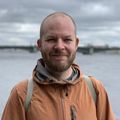
Hyperdrive - A P2P, Massively Distributed, Dropbox (in English)
Mathias Buus Madsen, Partner and Node.js Hacker, Hyperdivision
(Video)
Distributing and sharing files between coworkers and friends is a problem that’s been around for a while. In the last 10 years, services like Dropbox have used cloud infrastructure to help make data sharing smoother. While convenient, these centralized services come with serious drawbacks. In this talk I’ll introduce an open-source, P2P alternative we’ve been working on called Hyperdrive, and why we think it finally offers a good and competitive solution to existing products. I’ll make sure to give a deep technical analysis and have plenty of demos.
I’m Mathias Buus, a distributed systems expert from Copenhagen, Denmark. For the last 8 years I’ve been working in the distributed space primarily with Node.js. I’ve contributed to a big amount of open source Node.js problems and am currently the maintainer of over 800 packages on the Node.js package manager, npm. I’m the co-founder of Hyperdivision, where we build products aimed at solving security and other issues for enterprises using novel P2P technology.
Science and Philosophy
In a much-noticed article, the Nobel Laureate Eugene Wigner talked about the “unreasonable effectiveness of mathematics in the natural sciences”. The best way to clearly experience this wondrous effect of mathematics on physics is through the formation of spectral colors of diluted hydrogen gas. For this, no more previous mathematical knowledge than what you have learned in school is necessary, nothing more than division…
Rudolf Taschner, born in 1953 in Ternitz near Vienna, was a professor at the Technical University of Vienna from 1977 to 2018. Together with his wife and his colleagues of the TU Vienna, he founded “math.space”, a venue which ran between 2002 and 2017 at MuseumsQuartier Vienna and which presented mathematics as a cultural achievement. In 2004, Rudolf Taschner was elected “Scientist of the Year”. Since 2017, he is the speaker for education and science at the club of the Austrian people’s party.


